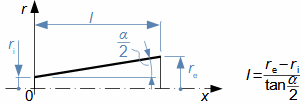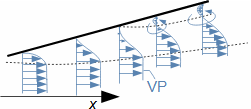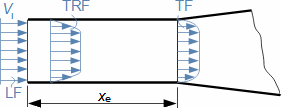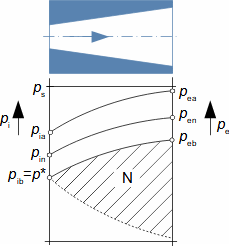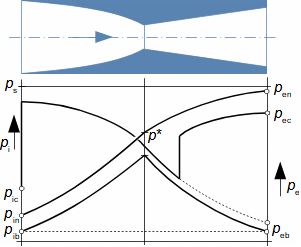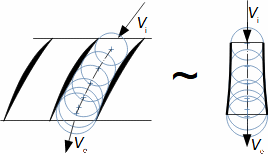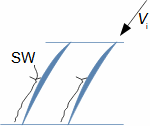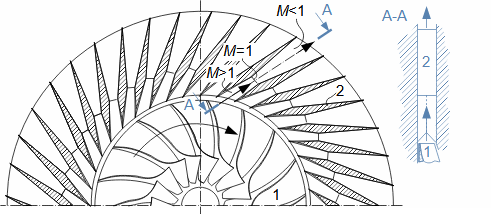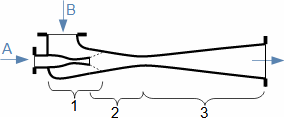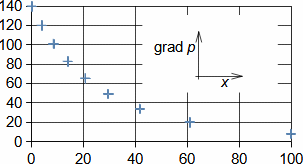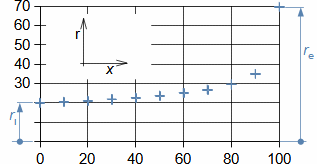What are diffusers and applications of diffuser theorySubsonic diffuserSupersonic diffuserA diffuser is a channel with a continuously changing flow cross-section. Fluid flow in the diffuser is a process that primarily involves an increase in pressure and a decrease in kinetic energy. According to Hugoniot theorem, a different shape of diffuser is suitable for supersonic inlet velocities than for subsonic inlet velocities. In the case of supersonic inlet velocity, the flow must first slow down to the speed of sound in the tapering part of the diffuser, see Figure 1.  1: Two basic types of diffusers left-diffuser for subsonic speeds; right-diffuser for supersonic speeds. A [m2] diffuser flow area; V [m·s-1] gas velocity; M [Mach] Mach number3.; A* [m2] critical cross-section of supersonic diffuser in which gas reaches speed of sound (critical state). The index i denotes the state at the inlet of the diffuser, the index e denotes the state at the outlet of the diffuser.Diffuser channelDiffuser theory has wide application in various types of current machines with diffuser channel shapes. The sophisticated diffuser theory can be used to describe even, at first sight, very complex flows, for which a large amount of measured data is available for different diffuser shapes. Energy balance of diffusersThe energy balance of diffusers is based on the first law of thermodynamics and its basic result is the diffuser efficiency. Often the term hydraulic diffuser efficiency is also used if the density changes inside the diffuser are insignificant. EfficiencyDiffuser lossesIsoentropic compressionPressure lossh-s chartThe compression in the diffuser is affected by energy dissipation or losses. An h-s chart can be used to identify the actual gas states as it flows through the diffuser and the losses, where the comparative (ideal) process is an isentropic compression with the same pressure and velocity at the outlet as the actual compression, see Figure 2. The pressure loss1. Lp is then defined as the loss between the total outlet and inlet pressure of the diffuser. To overcome the loss Lp and achieve the same pressure as in lossless compression, the kinetic energy at the diffuser inlet must be increased by just the value of Lh. |





